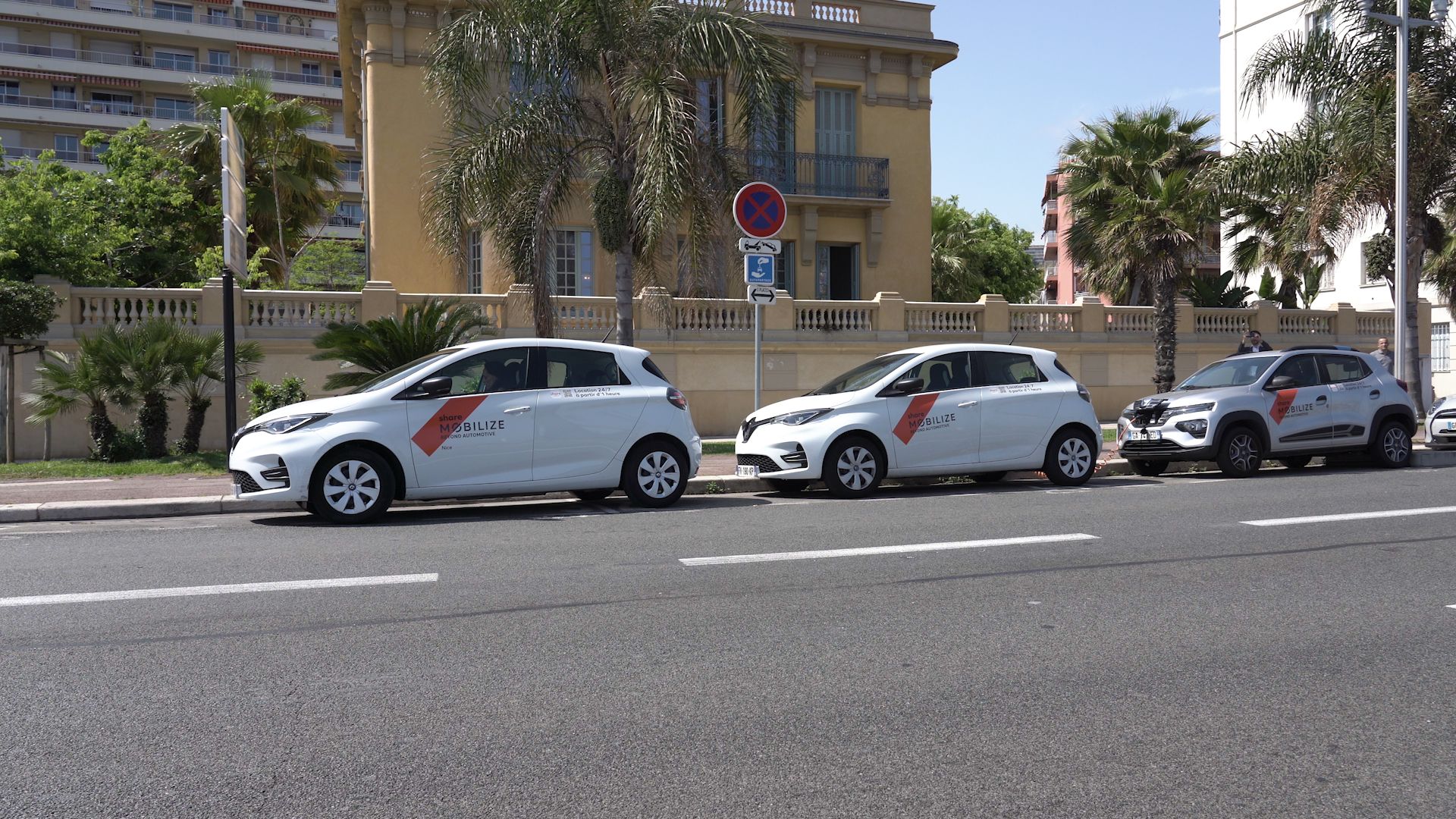 Stationsbasierter Dienst Mobilize Share in Nizza. Foto: RENAULT/MOBILIZE
Stationsbasierter Dienst Mobilize Share in Nizza. Foto: RENAULT/MOBILIZE
The transport landscape in urban areas is changing: Faced with congestion, driving bans and rising vehicle costs, more and more city dwellers are turning to car sharing. Many local governments are in favour of this solution as it gives communities access to a wider range of transport options. But how do operators and municipalities come to an agreement when introducing a car sharing service? What criteria need to be taken into account to ensure that the project runs smoothly? Guillaume Naegelen, Head of Programme at Mobilize, the mobility brand of Renault Group, on the launch of the Zity by Mobilize and Mobilize Share electric fleets in Madrid and Nice.
Station-based or free-floating
In principle, there are two types of car sharing models: station-based and free-floating systems. Zity by Mobilize is one of the free-floating offers. The vehicles are available without fixed pick-up and drop-off points on the street. There is no minimum rental period. Users can finish their ride whenever and wherever they want within a defined area. Typically, most rides do not last more than two or three hours.
Mobilize Share is a station-based car sharing solution: users can book the vehicles in advance for a certain period of time and thus ensure that the desired mobility solution is available. Users have to pick up and return the vehicles at a specific location, which is used for both parking and recharging the vehicles, as is the case in Nice. Laurence Béchon explains that car sharing services work best in medium to large urban areas, where they complement existing modes of transport.
When introducing a car sharing service, operators have to take into account several criteria. For example, the number of inhabitants and jobs, density, the ratio between jobs and housing, accessibility and efficiency of existing transport modes, and competition are crucial factors. However, the weighting of these criteria differs for free-floating and station-based car sharing services.
Zity by Mobilize in Madrid
Free-floating car sharing services like Zity by Mobilize are suitable for urban areas with a high population density. There, people are more open to using several different modes of transport. In order to attract and retain customers in such a competitive environment, the services need to be affordable and straightforward. In addition, the vehicles must be easy to park and free of charge. According to José Barrios, Operations Manager at Zity Madrid, free-floating car-sharing services like Zity by Mobilize are suitable for large cities with more than 500,000 inhabitants. Here, a certain number of vehicles must be available per kilometre. A car sharing service is considered efficient if users can find a vehicle less than 300 metres away. This means that a city like Madrid with three million inhabitants needs 700 to 800 vehicles.
Maintenance and charging facilities play a key role in keeping a fleet of this size on the road. José Barrios explains that Zity has 3,000 square metres of space and employs 70 people to maintain the service.
Mobilize Share with 62 electric vehicles in Nice
Station-based services such as Mobilize Share are better suited to medium-density urban areas where people use car-sharing services only occasionally. In Nice, a city of around 340,000 inhabitants, Mobilize Share’s fleet includes 62 electric vehicles, which is enough to meet the mobility needs of its inhabitants. Their journeys tend to last longer than those of free-floating carsharing users. “The average rental time here is about seven hours,” explains Guillaume Naegelen, Head of Programme Mobilize Share. “Maintenance is provided by the local Renault dealer network.”
Choosing the right solution
Once Mobilize has identified a potential site, the provider contacts the local administration. If necessary, those responsible for managing roads, traffic and parking are involved in the project implementation. All parties involved then implement the project together. The area in which the service is provided must be clearly defined. Numerous stations and easily recognisable boundaries of the service area, such as large boulevards or ring roads, create incentives for the use of free-floating car sharing services. The outcome of the dialogue with local authorities also depends on the duration of the operator contract, the level of support and the possible fees for the provision of parking spaces. In most cases, authorities support car sharing as it helps to reduce noise and air pollution, especially for fully electric fleets. Moreover, these services are easy to use, affordable and increasingly popular – a plus for a modern, liveable city. www.mobilize.com
Read this and other articles on the topic of electromobility and autonomous driving in the current eMove360° magazine. Free download PDF.